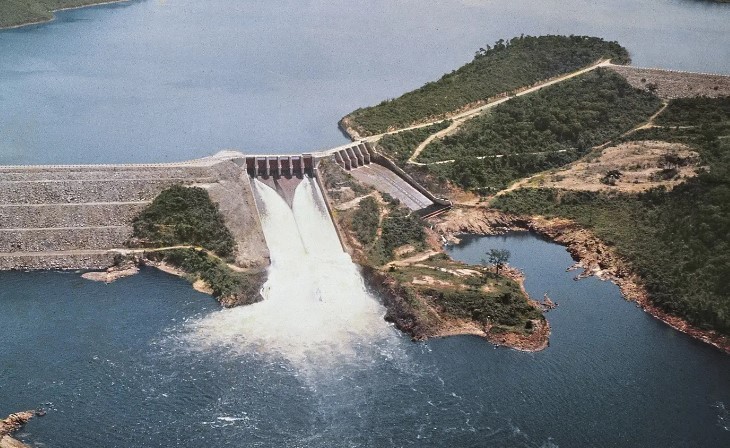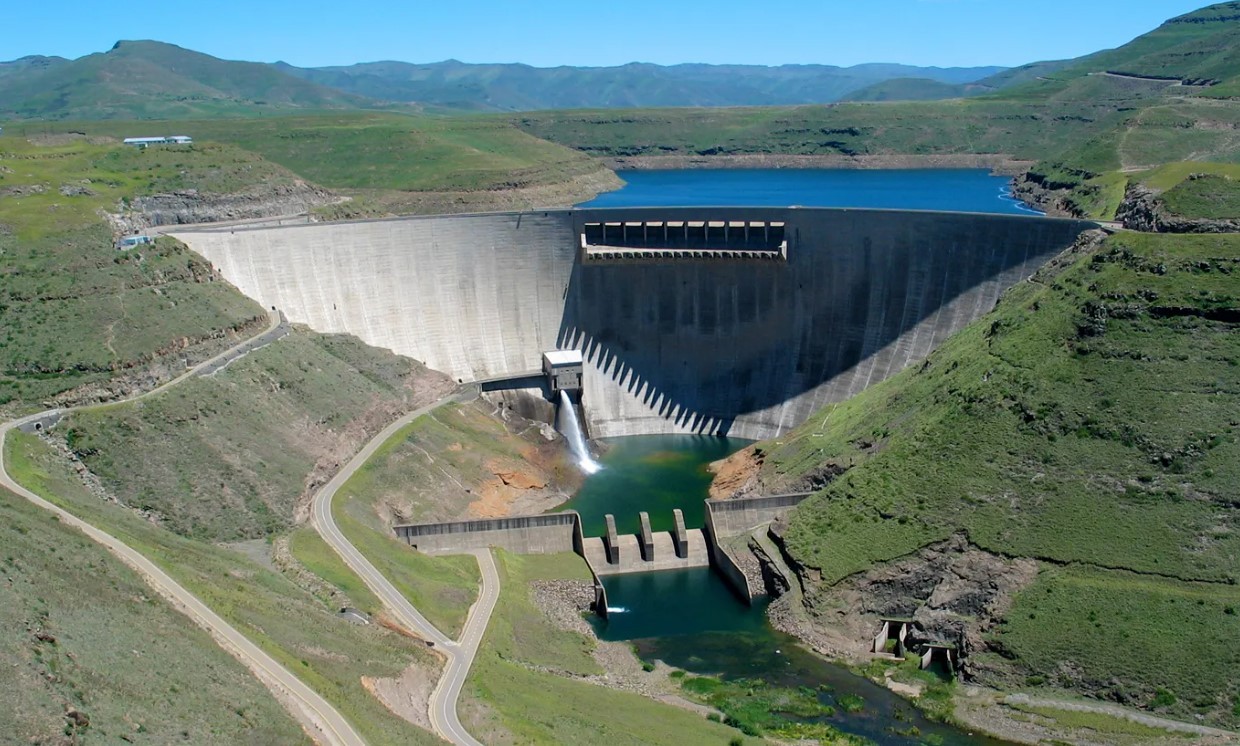UK’s Top 8 Largest Hydroelectric Power Plants Driving Clean Energy
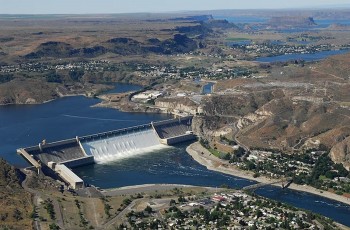 The Biggest & Most Majestic Hydroelectric Plants on Each Continent The Biggest & Most Majestic Hydroelectric Plants on Each Continent |
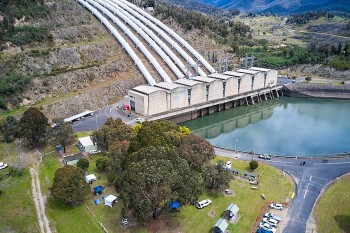 Top 6 Largest Hydroelectric Plants in Australia Top 6 Largest Hydroelectric Plants in Australia |
Overview of Hydroelectric Power in the UK
The UK hydroelectric power sector is shaped by three main types of plants: pumped storage, run-of-river power plants, and storage schemes. According to the International Hydropower Association (IHA), the UK has an estimated hydropower potential of 2.4 gigawatts (GW). Despite this significant potential, the future of hydropower expansion in the UK is likely to focus on small-scale projects, apart from new pumped storage schemes.
NS Energy highlights the top five largest hydroelectric power plants in the UK, showcasing key facilities that play a crucial role in the nation's renewable energy landscape. Across the UK, hydropower plants vary widely in capacity, from a few hundred watts to several hundred kilowatts. Below, we detail some of the UK’s most powerful hydroelectric stations, each generating 80MW or more. Most of these large-scale plants are located in Scotland, except for Dinorwig Power Station, the UK’s largest, situated in North Wales.
Hydroelectric Power Growth in the UK
Today, the UK boasts 1,576 hydropower facilities, with the number of stations increasing more than fivefold between 2003 and 2021. Though hydropower in the UK dates back to the late 19th century, its importance has surged as the nation aims to reduce fossil fuel dependency and meet its 2050 carbon-neutral target. The UK’s mountainous terrain and high reservoirs make it ideal for hydroelectric power generation, delivering around 1.65 GW, or about 1.8% of total installed capacity.
However, new development has slowed due to environmental concerns, as many promising sites are located in protected areas, and construction costs are often seen as prohibitive.
Micro Hydroelectric Power in the UK
Beyond large-scale projects, micro-hydro power has emerged as a key player in the UK’s renewable energy mix. These smaller systems typically generate 50 to 100 kW and gained momentum in the early 2000s as communities sought sustainable energy alternatives.
Today, there are around 100 micro-hydropower installations across the UK, with notable community-driven projects like Torrs Hydro in New Mills and Stockport Hydro, as well as private initiatives such as Cranage Hydro at Holmes Chapel. These projects reflect the growing shift toward localized renewable energy solutions that help reduce carbon emissions while supporting local economies.
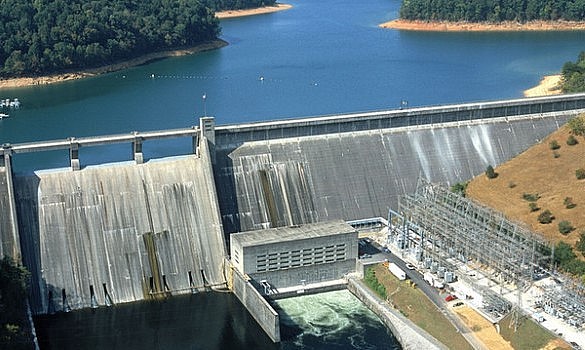 |
| Most Majestic Hydroelectric Plants in the UK |
Top 10+ Biggest and Most Majestic Hydroelectric Power Plantss in the UK
1. Dinorwig Hydroelectric Power Station: 1,728MW
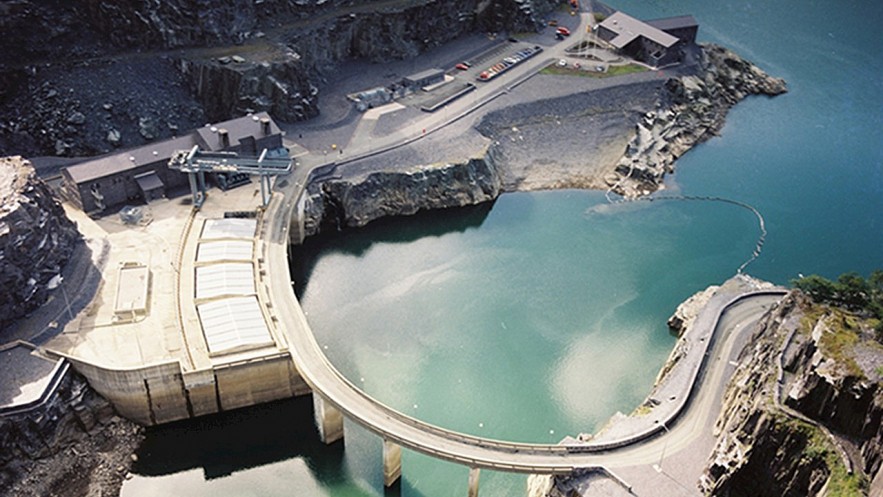 |
| Dinorwig Power - Biggest hydroelectric power plants in the UK |
The 1,728-megawatt (MW) Dinorwig power plant is situated in the northwest Welsh region of Snowdonia. The power station in north Wales' Elidir Fawr mountain was constructed in caverns and offers quick response to sudden electricity demands.
The power plant employs pumped-storage technology and is run by First Hydro Company, a subsidiary of Engie.
The pumped hydroelectric plant, which was finished in 1984, has six generating units and 16 km of underground tunnels.
The generators that turn the kinetic energy into electricity are connected to the six 300MW Reversible Francis-type turbines. 10km of underground 400kV cables connect the power station to the Pentir National Grid substation.
With an energy storage capacity of about 9.1 gigawatt hours (GWh), Dinorwig can also transition from standby to peak capacity in less than 16 seconds.
2. Ben Cruachan Hydroelectric Power Station: 440MW
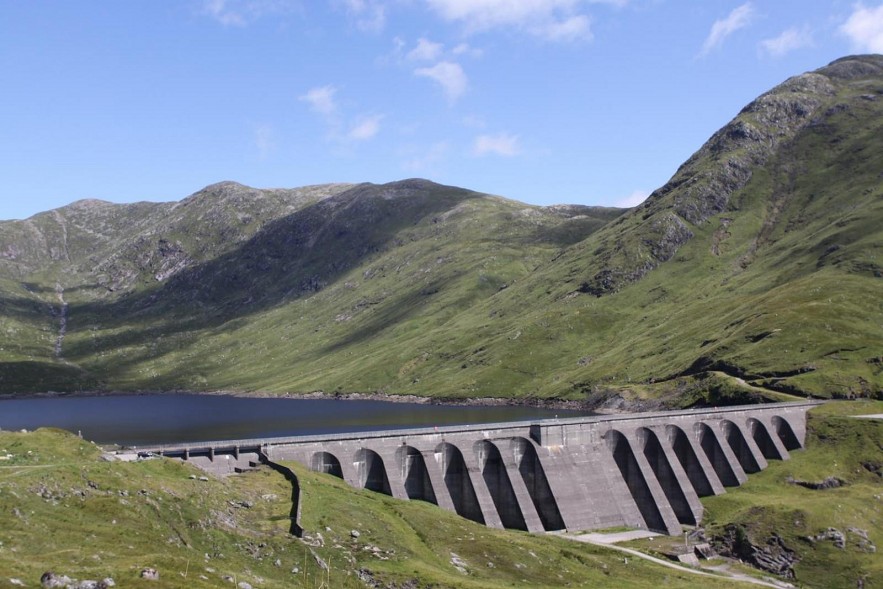 |
| Ben Cruachan Power Station |
The Cruachan Pumped Hydro Storage Plant, located in Scotland's hollowed-out Ben Cruachan mountain, was inaugurated by the Queen in 1965.
When there is little demand for electricity, the station uses reversible turbines to pump water from Loch Awe to fill an upper reservoir on the mountainside.
The size of a football field, the station's machine hall has four Francis turbines. A 1 km long tunnel leads to the turbine hall.
Water for the plant's generators comes from a reservoir 396 meters above ground, on the Ben Cruachan mountainside. Using a system of pipes and tunnels that span 19 km, rainwater is diverted from streams and dumped into the reservoir.
The four Francis turbines work as both generators and pumps. Two of the turbines can produce 100 MW of power each, while the other two can produce 120 MW of power each.
3. Ffestiniog Hydroelectric Power Station: 360MW
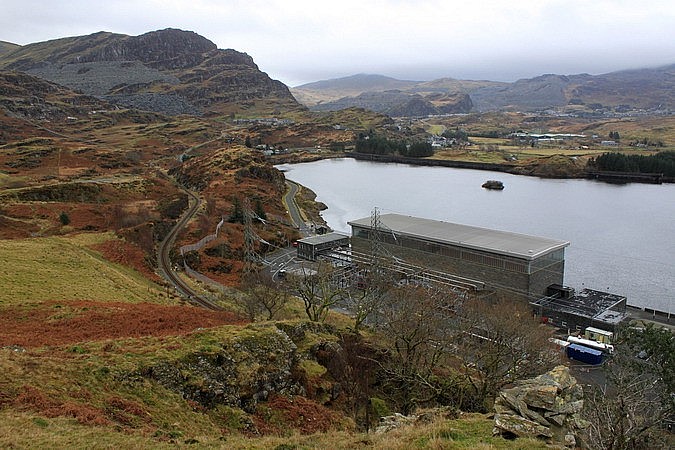 |
| Ffestiniog Power Station |
The Ffestiniog power station, in Gwynedd, northwest Wales, is close to Ffestiniog and was put into service in 1963. The four generating units at the plant have a combined output of 360 MW, which is sufficient to supply north Wales' entire need for electricity for several hours.
The upper reservoir of Ffestiniog, Llyn Stwlan, is where the generation cycle begins. Tan-y-Grisiau collects water, which is then pumped back to Llyn Stwlan.
The plant is run by First Hydro Company, and when pumping water back up to the Llyn Stwlan, it actually consumes 39% more electricity than it produces.
4. Foyers Hydroelectric Power Station: 300MW
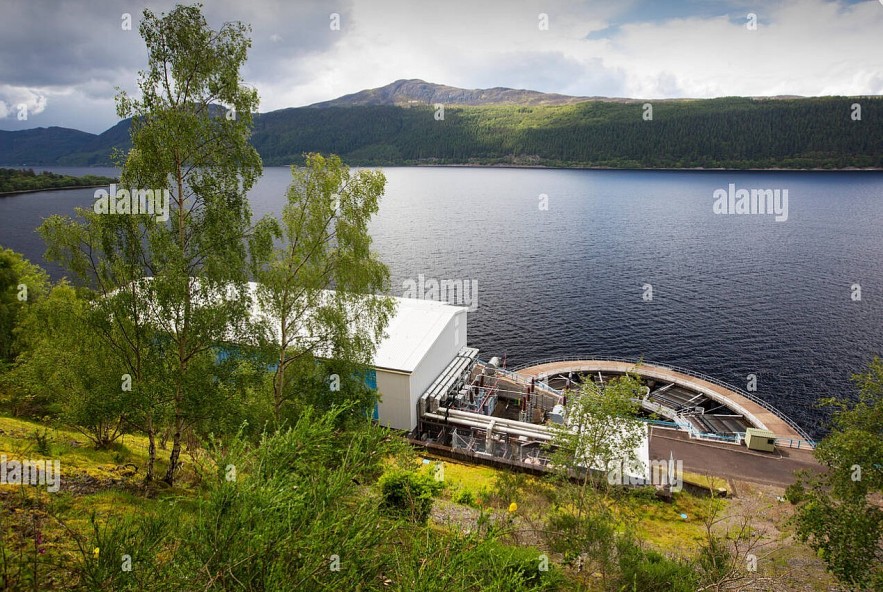 |
| Foyers Hydroelectric Power Station |
During periods of peak demand, the Foyers power station uses water stored in Loch Mhor in the Scottish Highlands to power two 150MW reversible-pump turbines.
In a typical year, the plant can produce enough electricity to power close to 68,000 homes.
Each of the plant's two pump turbines weighs more than 900 tonnes. In less than two minutes, the power plant can start producing electricity from scratch.
Foyers is remotely managed by Scottish energy company SSE from its renewable operations hub in Perth, Scotland. If necessary, it can provide 300,000 kW of electricity in 30 seconds.
One major dam, one pumped hydropower station, and one hydropower station are all part of the Foyers hydro scheme.
5. Mossford Hydroelectric Power Station: 247MW
The Vaich Dam was built in the 1950s, resulting in Loch Vaich. Water is transported from this location and Loch Droma to Lock Glascarnoch, a second artificial loch behind Glascarnoch Dam.
From there, water travels through a 5-mile tunnel to the Mossford power plant, which produces nearly 250MW of electricity.
6. Sloy Hydroelectric Power Station: 160MW
The Sloy power station, which is run by SSE, is situated close to Inveruglas on the banks of Loch Lomond. Four pipes with large inner diameters run down the mountainside to Loch Sloy, where the plant gets its water.
The North of Scotland Hydro Electric Board, which preceded Scottish Hydro Electric, began construction on Sloy in 1950 after receiving its commission. In the late 1990s, the station underwent renovations, and it reopened in 1999.
New turbines, generators, wiring, pipework, and interior decoration were all part of the work for the plant renovation. After being shut down, the Sloy power plant can resume full operation in five minutes.
7. Glendoe: 100MW
Since 2009, The Glendoe has been in operation. Scotland, in the UK, is the location of the 100MW hydro project. SSE and HOCHTIEF Solutions developed the project. The equity in this project is owned by SSE.
8. Lochaber Hydroelectric Power: 84MW
The aluminum smelter in Fort William uses the power produced by the Lochaber hydroelectric turbine. A 15-mile, 4.5-meter-wide conduit built before World War II transports water from Loch Laggan to Loch Treig and then on to Ben Nevis, where it generates more than 80MW of electricity. The tunnel was the longest water supply tunnel in the world for 50 years.
Beeston WeirThe largest river-driven hydroelectric power plant in the UK is located at Beeston Weir in Nottinghamshire. Known as Beeston Hydro, this small but significant hydroelectric project is situated on the River Trent and has a generation capacity of up to 1.66 MW. Constructed by Hyder Industrial Ltd. in 1999, Beeston Hydro holds the title of the UK's largest run-of-river hydroelectric plant. It officially began operations on January 4, 2000, and was later acquired by United Utilities in 2001. The plant, which has a design life of 20 years, now operates under the management of Infinis. At peak operation, the station handles water flows of 60 cubic meters per second through its two turbines. To protect local wildlife, particularly during the salmon migration season, the facility employs a bio-acoustic fish-fence—a bubble curtain emitting sound waves to guide fish safely toward the fish ladder, avoiding the turbine intakes. Beeston Hydro generates approximately 5.26 GWh annually, producing enough renewable electricity to power around 2,000 homes. |
In Conclusion
Hydroelectric power in the UK accounts for just 2% of the country’s total electricity generation and under 5% of the UK's renewable energy capacity. The largest facility, Dinorwig Power Station, delivers up to 1.8 GW in mere seconds. As of 2021, the UK had 1,576 hydropower plants, marking a fivefold increase since 2003. While the government encourages investment in hydroelectric projects, there is currently no national strategy for large-scale development, according to the DECC. Hydropower developers can access Renewable Obligation Certificates (ROCs) for plants built after 2002 with capacities of 20 MW or more, while smaller projects under 50 kW qualify for Feed-in Tariffs (FITs). Projects between 50 kW and 5 MW may choose between ROCs or FITs.
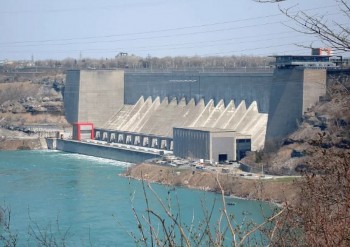 Top 6 Biggest & Majestic Hydroelectric Power Plants in the U.S for Discovering Top 6 Biggest & Majestic Hydroelectric Power Plants in the U.S for Discovering One of the oldest and most popular renewable energy sources is hydropower. Which hydroelectric power plants in the US are the largest? |
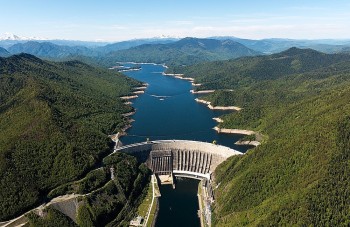 Top 10 Biggest & Most Majestic Hydroelectric Plants in the World Top 10 Biggest & Most Majestic Hydroelectric Plants in the World Explore the world's 10 largest and most majestic hydroelectric plants/dams based on generating capacity. |
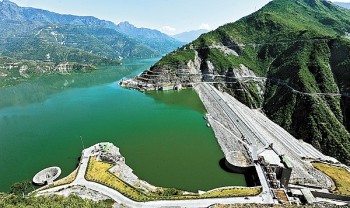 Top 10 Biggest & Majestic Hydroelectric Power Plants In India Top 10 Biggest & Majestic Hydroelectric Power Plants In India Join KnowInsiders.com to discover the top 10 largest dams/hydroelectric plants in India today based on their hydropower capacity. |
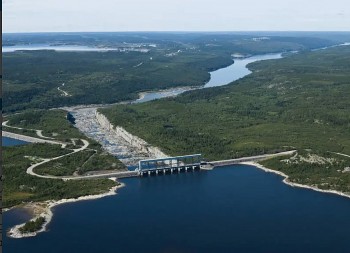 Top 10 Biggest & Majestic Hydroelectric Plants In Canada Top 10 Biggest & Majestic Hydroelectric Plants In Canada Hydroelectric power is one of Canada's chief sources of energy and accounts for more than 25% of domestic energy consumption.Explore the 10 largest and most ... |

